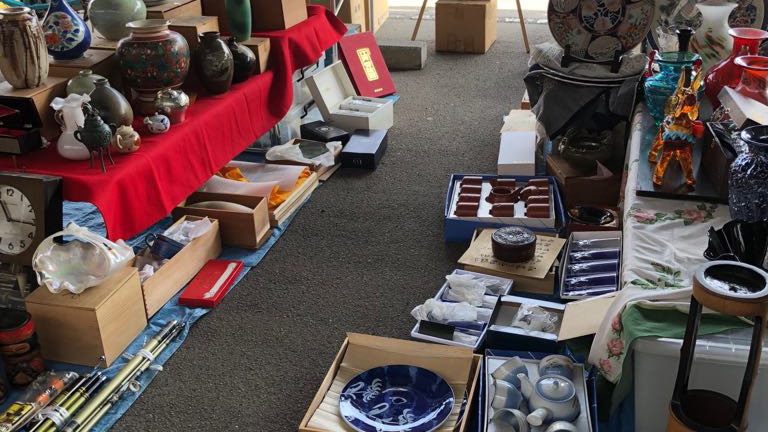A new year does not really begin until Chinese New Year. Every year, Hongkongers and Chinese across countries anticipate the biggest celebration of the year. You may have noticed the red and gold decorations in place of Christmas trees at malls and the Christmas jingles fading into Chinese instrumental music in stores.
Chinese New Year (Lunar New Year, Spring Festival) signifies the ending of winter and the beginning of spring in a new lunisolar calendar year. It marks the first new moon of the year which usually falls between 21 January and 20 February. In 2021, the biggest, most important Chinese celebration of the year starts on 12 February for the Year of the Metal Ox.
Folklore of the Chinese New Year
Now, you may wonder about the Chinese zodiac animals and what the year of an animal and element means. Like almost all traditional Chinese festivals, Chinese New Year is entwined with folklore and mythological tales passed down from generation to generation. The tale of the ‘Heavenly Gate Race’ is the origin of the 12 Chinese zodiac signs, in the order of Rat, Ox, Tiger, Rabbit, Dragon, Snake, Horse, Goat, Monkey, Rooster, Dog, and Pig. This sequence was named according to the order of each animal arriving at the Heavenly Gate in a race to become the 12 Guards of the Jade Emperor. The Rat ranked first with their quick-wittedness by hiding in the Ox’s ear. The hardworking Ox came next and then the agile Tiger and Rabbit. The cat person in you may possibly think, was there a cat, where is the Cat zodiac? In fact, the Cat was sound asleep at their home and missed the morning call. Combined with the five rotating elements, the zodiacs reflect predictions of the year. And for 2021, the Year of the Metal Ox, there would be a focus on family life, romantic relationships and friendships. 2021 is a year of the calm after the storm. It is the time for recovery and starting afresh with hard work and discipline which would yield us rewards and success.
The Chinese Zodiac story is just one of many Chinese New Year legends. The other widely popularised tale is the one with the mythical beast, the Nian. Every spring, the Nian would storm the village and feast on the villagers, particularly children, at night. The villagers would go into hiding to avoid the attack. But one year, an old man decided to stay the night alone and get revenge on the monster. To the villagers’ surprise, the old man successfully kept himself and the village intact by putting red papers on the walls and sparking firecrackers. Since then, the villagers would wear red and put up red lanterns and firecrackers to fill the village with loud sounds to scare away the Nian. The Nian never came to the village again and the traditions of wearing red, decorating the house in red, lanterns and firecrackers had been passed down.
Celebrations in Hong Kong
Some of the ancient customs for Chinese New Year celebration are still common to this day. For instance, families will clean their house on nin ya baat 年廿八 (three days before the new year) to sweep away bad fortune and prepare for good luck in the coming year. Yet, like how Europeans have different ways of celebrating Christmas, there are various traditions within different Chinese communities and even families. Vietnamese celebrate Lunar New Year with parades including masqueraded dancers which is known as the Mea Lan dancing, and play gambling dice games like Bầu cua tôm cá. Meanwhile, Koreans will perform rituals like Sebae where children are dressed in traditional clothing (hanbok) and take a formal traditional bow to greet their elders. Chinatowns in Australia will become an extravaganza dragon boat races, film and food festivals during the festival. In Hong Kong, you can expect colourful parades and fairs to intimate get-togethers.
Besides lion and dragon dancing performances at malls and stores, the annual Cathay Pacific International Chinese New Year Night Parade is the biggest parade of the year. It has always been held on the first day of Chinese New Year in the past 20 years. Floats, dancers, acrobats, musicians would fill the streets of Tsim Sha Tsui with cheer. On the second day of Chinese New Year, the spectacular fireworks display at the Victoria Harbour would gather large crowds with families and children along both sides of the harbor front and in boats.
Chinese New Year is all about family. Family unions are always on the top of the to-do list. Families would visit one another (bai nin 拜年) and have big feasts with relatives and friends. Red pockets (lai si 利是) are given by family members or friends who are married to children and junior family members. Going to the Chinese New Year Flower Market as a family is also a custom in Hong Kong. Flowers and plants denoting wishes and good luck are very popular as gifts and decorations. Besides, it is also customary for families to go on a hike or field trip for good luck (hang dai wun 行大運). Each year, the Lam Tsuen Wishing Trees welcome hundreds of tourists and locals who come to wish for prosperity. Wishes are written on joss paper with an orange tied to it, it is then thrown to the trees. It is believed that joss paper successfully hung on the branches would make the wishes come true.
Chinese New Year Celebration in the Pandemic
It’s time to address the elephant in the room. Covid-19 has put most 2020 Chinese New Year activities in halt and this remains the same for 2021 as the number of cases continue to fluctuate. Here are some Chinese New Year activities you can do at the comfort and safety of your home as we wish for a pandemic-free year.
Movie marathon
While going to the cinema seems like a tale from the good o’ days, you can catch Chinese New Year movies on streaming platforms at home with your close family. Stephen Chow’s movies are classic with its absurd comedy and its action-packed visuals. Some titles include All’s Well, Ends Well, Kung Fu Hustle and King of Comedy. My Lucky Star and Fat Choi Spirit are also great choices for the 2000s nostalgia.
Cook up a feast
Instead of going to yumcha to enjoy scrumptious meals, try making them yourself at home. Turnip cakes, sticky rice cakes, dumplings and sesame balls are some manageable and festive recipes. It can be a fun activity with your family and you can also give them out as gifts for your friends and relatives.
Take a hike
Make good use of the holidays and go on a hike. The wishing trees and temples may be closed this Chinese New Year but you can still take a walk through the countryside treks and trails. Keep a safe distance from other hikers and appreciate nature.
Have a Zoom-union
Zoom has become the new way to connect with family and friends. During Chinese New Year, you can hold a reunion with your relatives and friends, continuing the coming-together tradition. Throw a Chinese New Year party and have a virtual and safe ‘bai nin’.
Chinese New Year is a festival about reunions with friends and family, and the beginning of a fresh year with new opportunities and prosperity to come. This Chinese New Year may be another weird one. But it is important to remain social-distancing for your loved ones. Let’s wish that it is the last Chinese New Year during the pandemic!






